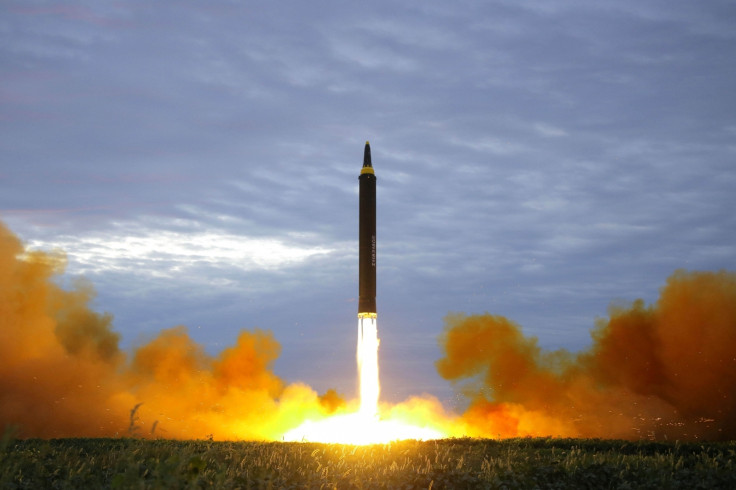All you need to know about North Korea's rapidly growing nuclear arsenal
Missile and nuclear tests have become more common than ever, putting the world on edge.
Recent missile launches and nuclear tests from North Korea have put the world on edge.
But as always there are more questions than answers from about this pariah state, creating an unknown threat to the planet.
What is the H14 ICBM?
The H14 or Hwasong-14 is North Korea's most powerful inter-continental ballistic missile (ICBM).
After a test in July, state media in Pyongyang reported the missile had flown 580 miles and reached a peak altitude of 1,741 miles.
Some experts believe this missile could easily reach the US mainland, placing cities such as San Francisco and Los Angeles at risk.
The ICBM is made up of various components. The base includes the engine, which helps boost it into the atmosphere. The tip, protected by a shroud, is where the warhead is housed.
North Korea's capabilities took many nations by shock, but questions have been raised over their reliability.

How does it compare to previous nuclear attacks?
The reliability issues have often come down to whether North Korea can successfully miniaturise a nuclear warhead into an ICBM and launch it.
But with the country claiming to have got over those hurdles, concerns have been raised about the power of their nuclear warheads.
The most recent test is estimated to have been around 120 kilotons (kt).
To put that into scale, the nuclear bombs that were dropped onto Hiroshima and Nagasaki measured in at 15kt and 20kt respectively.
How long has North Korea been developing weapons for?
The military in North Korea has developed their weapons over the past 30 years.
Their very first missile test came in 1984. Since then, dozens of missiles have been launched from North Korea.
The bulk of these have been tested in the past 12 months, showing a sharp escalation in their development programme.
Their nuclear weapons development, which began in 2006, has seen a similar increase in power. When the testing began, their nuclear weapons power reached just 0.5KT, significantly lower than the 120KT that was revealed last week.
How far can their missiles go?
The range of the North Korean military has often been questioned. Early missile tests had a range that was no further than a few hundred miles, barely leaving the Korean peninsula.
But the most recent tests had rapidly expanded their target range.
The H14 has a range of up to 6,200 miles, which would enable it to reach the US mainland, Canada and all of the Australasian continental region.
The H08 has a greater range of 7,200 miles and could in theory reach the east of the United States.
However, the reliability and technical difficulties that have dogged Pyongyang means that the further the missiles can go has an impact on the power that is packed inside it.
What about the rest of their military?
Overall, the full arsenal that North Korea has is unknown. But it is thought many parts of their armed forced have weapons and machinery is from the Soviet era.
These outdated weapons, tanks and missiles are the reason it has taken so long for North Korea to reach its current stage.
The US spends around $600bn every year on the military, compared to the $6bn budget Pyongyang has.
© Copyright IBTimes 2024. All rights reserved.






